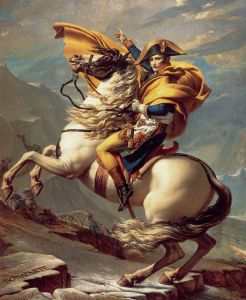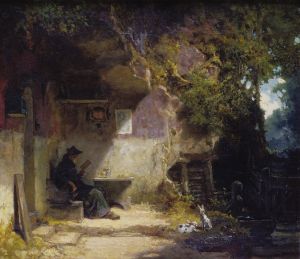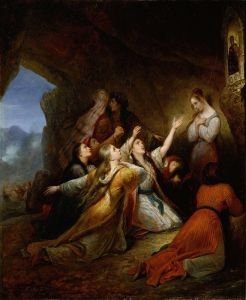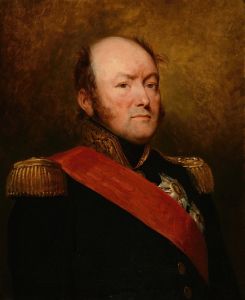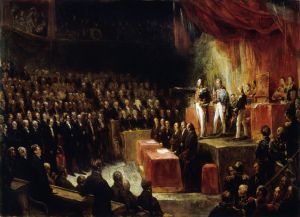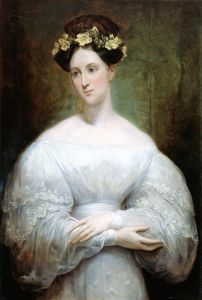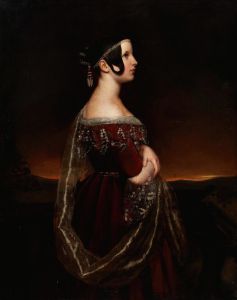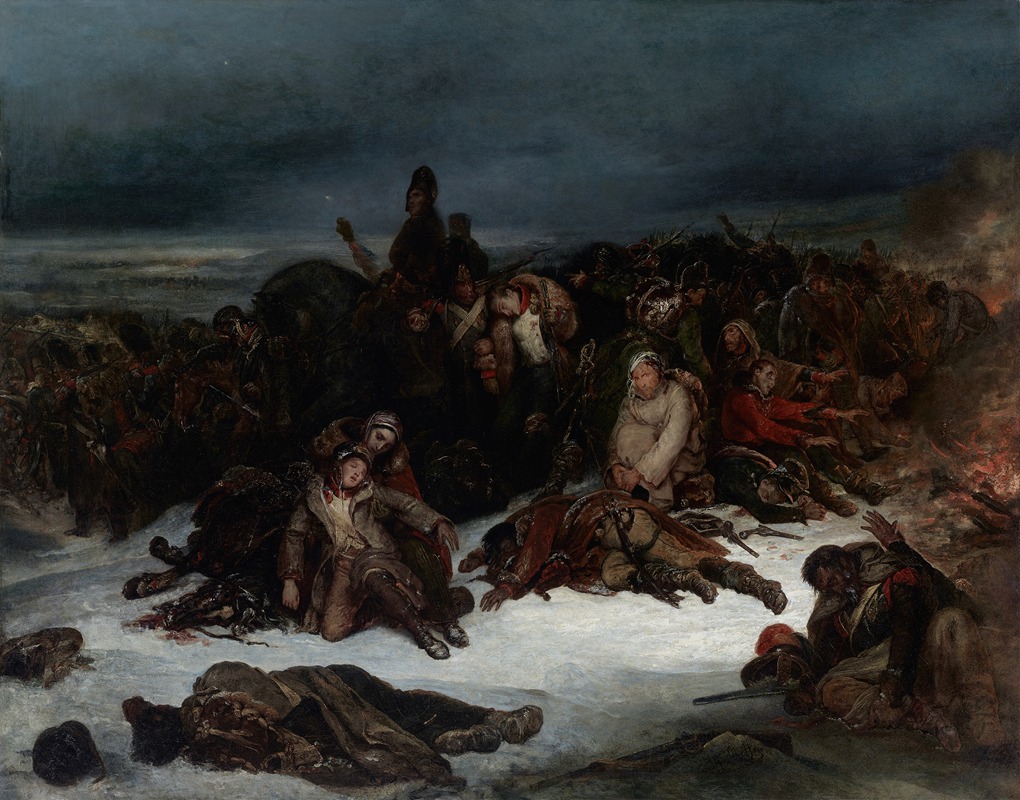
The Retreat of Napoleon’s Army from Russia in 1812
A hand-painted replica of Ary Scheffer’s masterpiece The Retreat of Napoleon’s Army from Russia in 1812, meticulously crafted by professional artists to capture the true essence of the original. Each piece is created with museum-quality canvas and rare mineral pigments, carefully painted by experienced artists with delicate brushstrokes and rich, layered colors to perfectly recreate the texture of the original artwork. Unlike machine-printed reproductions, this hand-painted version brings the painting to life, infused with the artist’s emotions and skill in every stroke. Whether for personal collection or home decoration, it instantly elevates the artistic atmosphere of any space.
Ary Scheffer's painting The Retreat of Napoleon’s Army from Russia in 1812 is a significant work of art that depicts a pivotal moment in European history. Created by the Dutch-French Romantic painter Ary Scheffer (1795–1858), the painting captures the harrowing retreat of Napoleon Bonaparte’s Grande Armée from Russia during the winter of 1812. This military campaign, known as the French invasion of Russia or the Russian Campaign, ended in disaster for Napoleon and marked a turning point in the Napoleonic Wars.
The painting portrays the suffering and desolation experienced by the French troops as they retreated from Moscow. After Napoleon's army captured Moscow in September 1812, they found the city largely abandoned and set ablaze, leaving them without adequate supplies or shelter. Facing the onset of the brutal Russian winter, dwindling resources, and constant harassment by Russian forces, the Grande Armée was forced to retreat. Of the approximately 600,000 soldiers who began the campaign, only a fraction survived the journey back to France.
Scheffer’s work is notable for its emotional intensity and dramatic use of light and shadow, hallmarks of the Romantic style. The painting focuses on the human suffering and the devastating consequences of war, rather than glorifying military conquest. The figures in the painting are depicted as weary, frostbitten, and struggling against the elements, emphasizing the physical and psychological toll of the retreat. The stark, icy landscape serves as a backdrop, reinforcing the sense of isolation and despair.
Ary Scheffer was a prominent artist of the Romantic movement, known for his historical and literary subjects. His works often explored themes of human emotion, morality, and the impact of historical events. The Retreat of Napoleon’s Army from Russia in 1812 reflects these interests, as it combines historical narrative with a focus on the individual experiences of soldiers caught in a catastrophic event.
The painting is an example of how Romantic artists used historical events to evoke empathy and reflection. By highlighting the suffering of ordinary soldiers, Scheffer’s work invites viewers to consider the human cost of war. While the exact date of the painting’s creation is not specified, it is consistent with Scheffer’s broader body of work, which often addressed themes of heroism, tragedy, and the consequences of human ambition.
Today, The Retreat of Napoleon’s Army from Russia in 1812 is recognized as an important artistic interpretation of one of Napoleon’s most infamous military failures. The painting remains a poignant reminder of the hardships endured during the campaign and serves as a testament to the enduring power of art to convey historical events.





